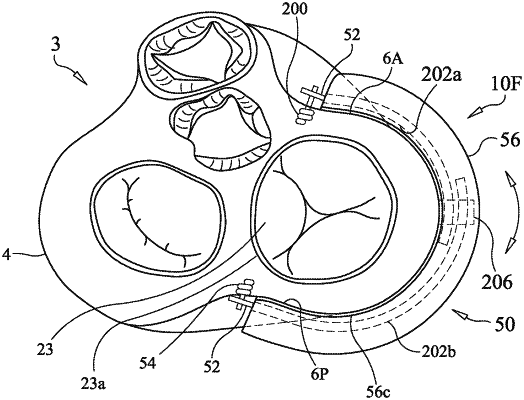| CPC A61F 2/2481 (2013.01) [A61B 17/068 (2013.01); A61B 17/10 (2013.01); A61B 90/06 (2016.02); A61F 2/246 (2013.01); A61F 2/2442 (2013.01); A61F 2/2451 (2013.01); A61F 2/2466 (2013.01); A61F 2/2478 (2013.01); A61B 17/064 (2013.01); A61B 17/2812 (2013.01); A61B 2017/00243 (2013.01); A61B 2017/00398 (2013.01); A61B 2017/00407 (2013.01); A61B 2017/00473 (2013.01); A61B 2017/00738 (2013.01); A61B 2017/00858 (2013.01); A61B 2017/0649 (2013.01); A61B 2090/061 (2016.02); A61B 2090/0801 (2016.02); A61F 2002/2484 (2013.01); A61F 2210/0033 (2013.01); A61F 2210/0076 (2013.01); A61F 2220/0016 (2013.01); A61F 2220/0025 (2013.01); A61F 2220/0033 (2013.01); A61F 2220/0083 (2013.01); A61F 2230/0013 (2013.01); A61F 2230/0023 (2013.01); A61F 2250/001 (2013.01); A61F 2250/0002 (2013.01); A61F 2250/0003 (2013.01); A61F 2250/0004 (2013.01); A61F 2250/006 (2013.01); A61F 2250/0007 (2013.01); A61F 2250/0029 (2013.01); A61F 2250/0036 (2013.01); A61F 2250/0064 (2013.01)] | 23 Claims |

|
1. A device configured to be attached to a surface of a tissue or organ using a minimally-invasive procedure, said device comprising:
a main body having a device surface adapted to be contacted to the tissue or organ;
a sensor on or in said device surface adapted to sense a signal characteristic of a function of tissue or organ;
an actuator in a portion of said main body which, when actuated, changes a conformation of said main body; and
a controller configured to receive said signal, process said signal, and, control actuation of said actuator when it is determined that an unacceptable condition of functioning of the tissue or organ is occurring;
wherein said sensor comprises an audio sensor configured to receive audio signals generated by functioning of the tissue or organ, and wherein said controller compares an audio signature of the tissue or organ characterized by electrical signals converted from the audio signals received by said audio sensor, with a normal audio signature characteristic of the tissue or organ with normal function, to determine whether to actuate said actuator.
|